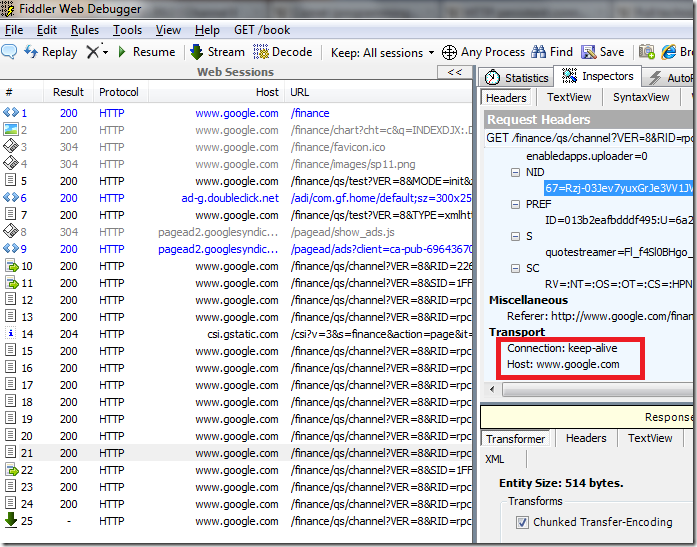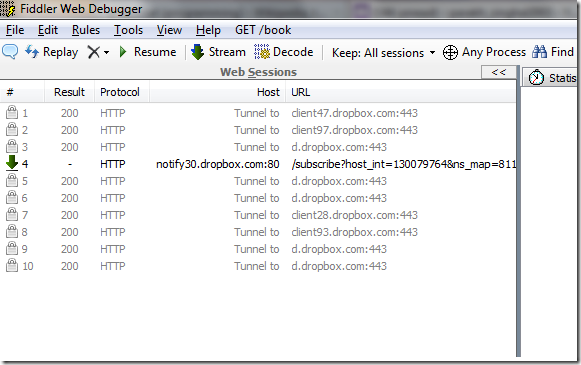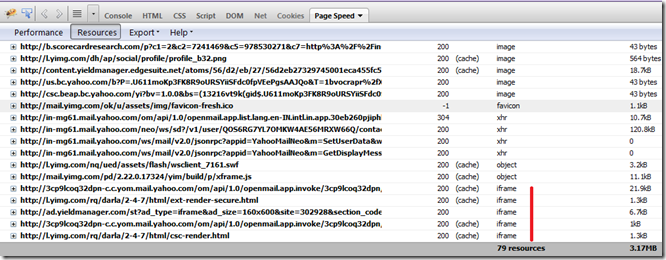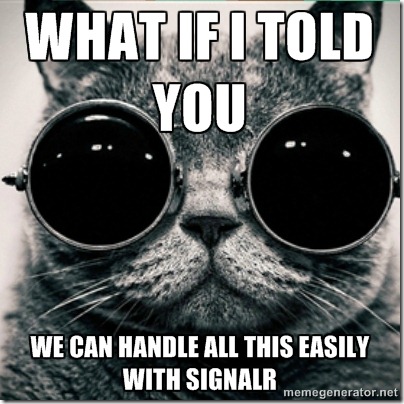Key Takeaway:
SignalR is the newest member in the .NET ecosystem fully supported by Microsoft, offering an abstraction over the transport layer, that enables developers to make scalable applications that can have an real time asynchronous communication between server and client(s) and vice versa.
Read On
In the client server model, there are two modes of communication at play – push or pull. In pull paradigm, it is the client that pulls the information from the server. In push, it is the server that explicitly sends the information to the client. The web model is based on the pull technology, affectionately known as the request-response pattern. The client (browser) requests information from the server, and gets the response (web page, data etc.) Once this transaction is done the server merrily goes back into the state of amnesia. This pattern is the reason, why the web is stateless.
Whenever there is a requirement of data being explicitly pushed from the server, it poses a different set of problems than what the stateless nature of web is designed to solve. You then have to keep track of connections going to various clients all the while maintaining scalability and performance.
To achieve push from server this there are various kinds of hacks that are put in place, but all based on pull paradigm. The various sleights include opening a never ending connection to the server to polling the server again and again. There is even a standard term for such kinds of client-server interactions – COMET.
COMET operations fall under two kinds of categories –polling and streaming. Streaming is when the client opens up a connection to the server and keeps it open. Such kind of connection is called as a persistent connection and a characteristic of such a connection is the “Connection: keep-alive” command at the transport layer level. Persistent connection is predominantly used in web applications targeting real time data which needs to be server to a variety of versions of various browsers. One fine example is that of Google Finance. Notice that it uses persistent connection to bring in data continuously about the live condition of the financial market.

Google Finance uses persistent connection to update the webpage continuously.
Polling is the technique when the client keeps on sending requests to the server, demanding any new data that the server might have. A good example of polling is the Dropbox client application.

Dropbox client application in Windows 7 does polling.
Yet other trick involves using an iframe, which is fundamentally an HTML document embedded within a parent HTML document. This technique is primarily used to show ads dynamically within a web page and periodically pull a new one within the iframe.

Yahoo Mail’s new interface uses iframe to show advertisements.
The newest technology on the block is WebSocket protocol. WebSocket is part of HTML5 draft and is truly duplex and persistent form of connection to the server side processes. But sadly, not all the browsers and more importantly web servers support websocket protocol as of today. So if you are developing a public facing web site, you cannot truly rely on websocket yet.
So, all in all, right now we have a conundrum of technical tricks and an upcoming technology that is not uniformly supported by all client browsers and web servers, to solve the problem of serving real time data from server(s) to various client(s). Adding to the complexity is the fact that there are various kinds of clients available ranging from web browsers to sensors (that can use .NET Micro Framework) to native applications in iOS and Android ecosystems to desktop applications that require real time data pushed from a central server.

This is where SignalR comes into play and provides a unified approach to handle the requirement of asynchronous real time duplex communication between client(s) and server.
The way SignalR works is that it auto negotiates the protocol between the client and the server based on the capabilities of the pair. So if they support websocket, then that is used. If not websocket, then SignalR falls back to server sent events, if not that then forever frames and so on. So the developer is not required to worry about the protocol detection and usage and eventual graceful degradation. SignalR handles this automatically, all this while providing a uniform API to program against. SignalR is being actively developed by Damian Edwards’s team at Microsoft and they have already released the first version in the fall update (2012) of ASP.NET. SignalR scales well and already supports SQL Server, Service Bus and key-value system like Redis. Client side API is available for .NET (4.0 and 4.5), HTML in the form of a jQuery client, WPF, Silverlight 5 and Windows Phone 8.
In the next post I will make a simple application using SignalR. In the meantime please learn more about this awesome technology from the following videos:
1. Damian Edwards and David Fowler presenting basics of SignalR (Sorry video is too big to fit in here.)
2. Keeping It Realtime Conference - SignalR - Realtime on ASP.NET (Scott Hanselman & Paul Batum)
Please head out to the following links to get more information:
1. SignalR.net
2. www.asp.net/signalr
3. Source code of SignalR at GitHub